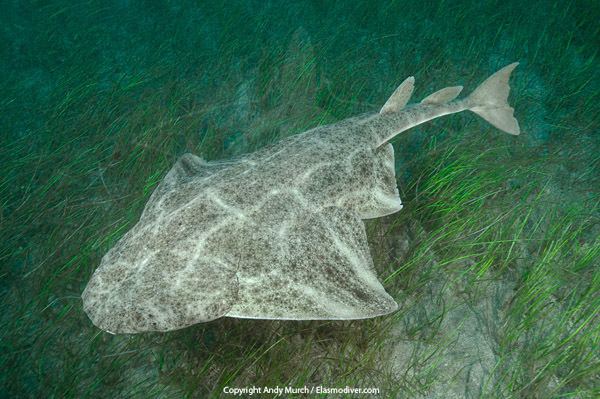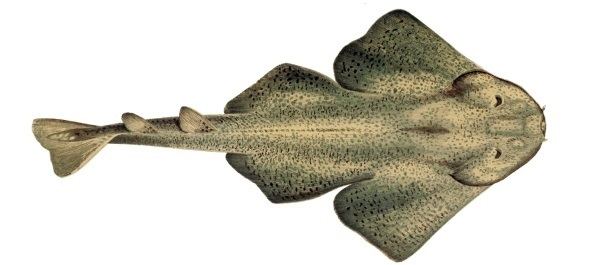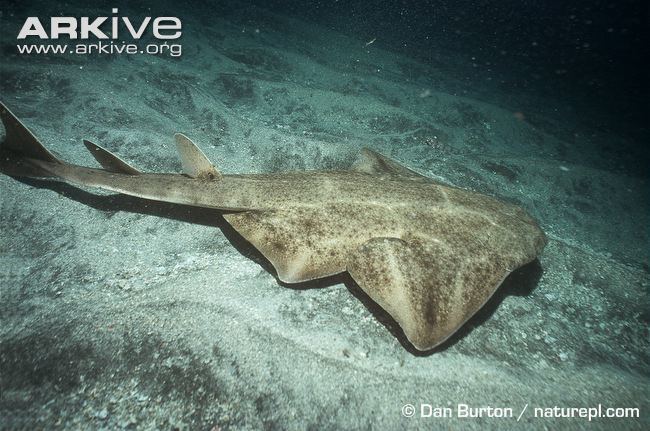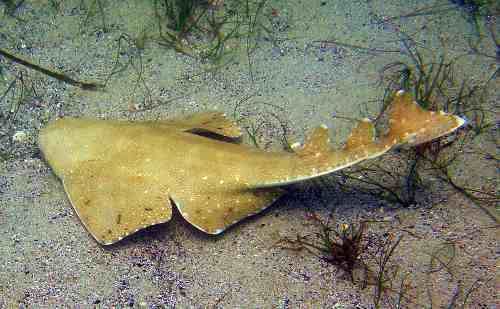Kingdom Animalia Subclass Elasmobranchii Higher classification Squatinidae | Phylum Chordata Scientific name Squatina Rank Genus | |
 | ||
Order Squatiniformes
F. de Buen, 1926 Family Squatinidae
Bonaparte, 1838 Lower classifications Squatina squatina, Sand devil, Pacific angelshark, Sawback angelshark, Japanese angelshark | ||
Angel shark birth deep sea world
Squatina is a genus of shark in the family Squatinidae, which are unusual in having flattened bodies and broad pectoral fins that give them a strong resemblance to rays. This genus is the only one in its family and order Squatiniformes. They occur worldwide in temperate and tropical seas. Most species inhabit shallow temperate or tropical seas, but a few species inhabits deeper water, down to 1,300 m (4,300 ft). Angel sharks are sometimes called monkfish, although this name is also applied to members of the genus Lophius.
Contents
- Angel shark birth deep sea world
- Angel shark squatina squatina
- Appearance and biology
- Behavior
- Commercial value
- Species
- References

Angel shark squatina squatina
Appearance and biology

While the forward part of the angel shark's body is broad and flattened, the rear part retains a muscular appearance more typical of other sharks. The eyes and spiracles are on top and the five gill slits are on its back. Both the pectorals and the pelvic fins are large and held horizontally. There are two dorsal fins, no anal fin and unusually for sharks, the lower lobe of the caudal fin is longer than the upper lobe. Most types grow to a length of 1.5 m (5 ft), with the Japanese angel shark, known to reach 2 m. Angel sharks possess extensible jaws that can rapidly snap upwards to capture prey and have long, needle-like teeth. They bury themselves in sand or mud lying in wait for prey, which includes fish, crustaceans and various types of mollusks. They are ovoviviparous, producing litters of up to 13 pups.
Behavior

Although this shark is a bottom-dweller and appears harmless, it can inflict painful lacerations if provoked, due to its powerful jaws and sharp teeth. It may bite if a diver approaches the head or grabs the tail.
Commercial value

Prior to the late 1980s, the Pacific angel shark was considered a "munk fish". It was a byproduct of commercial gillnetting, with no commercial appeal and was used only for crab bait. In 1977, Michael Wagner, a fish processor in Santa Barbara, California, in cooperation with local commercial fisherman, developed the market for angel sharks. The annual take of angel shark in 1977 was an estimated 147 kg. By 1985, the annual take of angel shark on the central California coast had increased to more than 454 metric tons or an estimated 90,000 sharks. The population declined dramatically and is now regulated.

In April 2008, the UK government afforded the angel shark full protection under the Wildlife and Countryside Act. Once considered abundant in the Atlantic Ocean, the angel shark (Squatina squatina) was classified as "critically endangered" in 2010.
Species
There are currently 21 recognized species in this genus:

